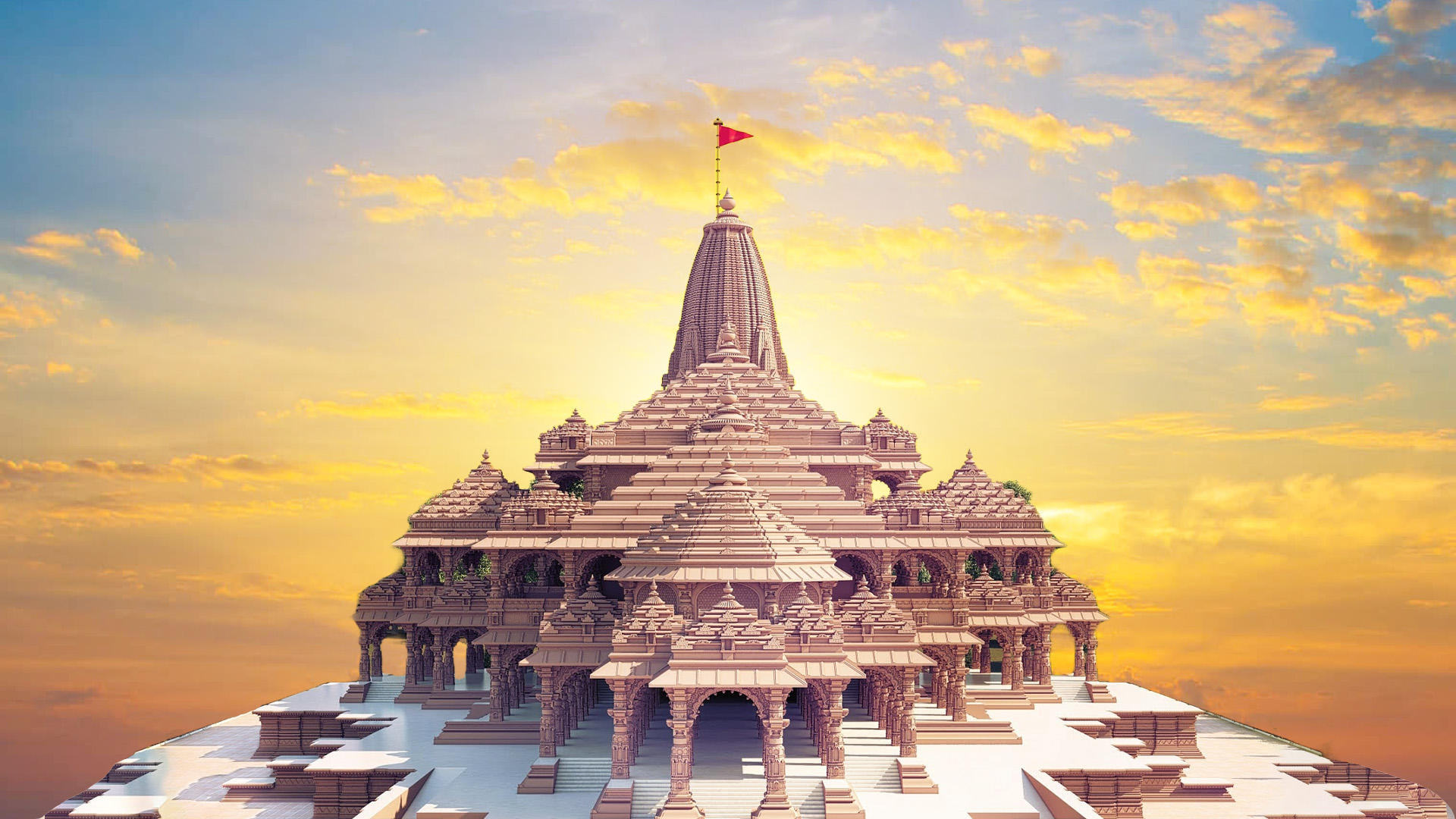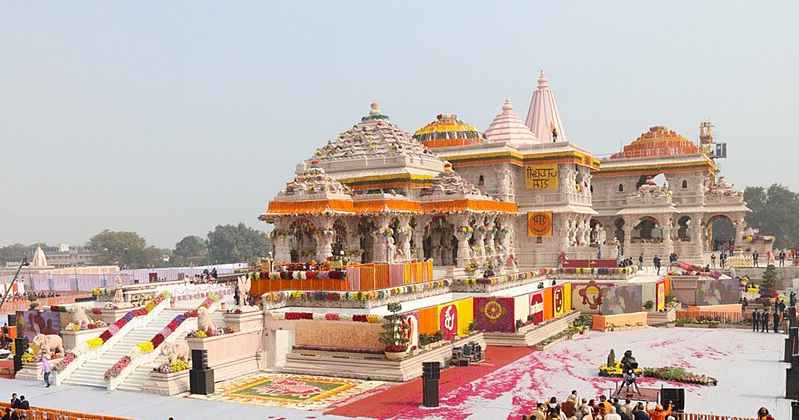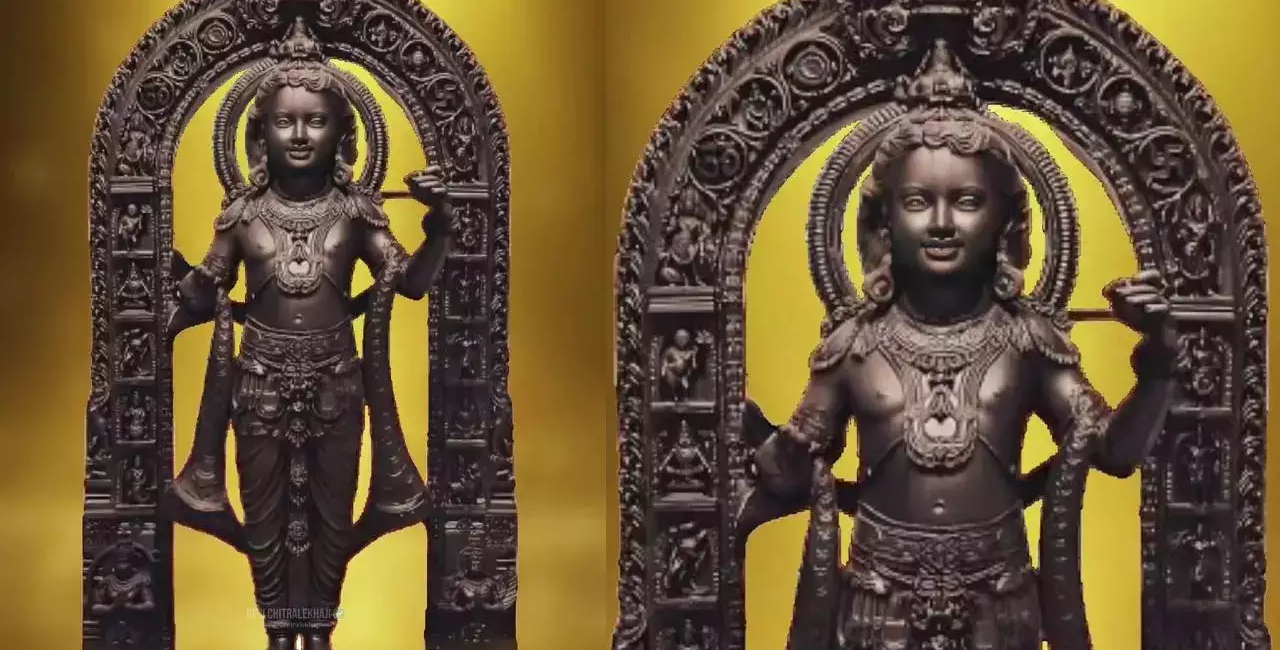


Ram Mandir Ayodhya
Ayodhya, Uttar Pradesh
Opening-Closing Time:
Share it on
About Ram Mandir Ayodhya Ayodhya, Uttar Pradesh
The visual representation of Ram Mandir Ayodhya captures its grandeur and spiritual significance, showcasing intricate architectural details and vibrant colors. High-quality photos, now easily accessible due to technological advancements, allow devotees to explore the temple's beauty from afar, fostering a deeper understanding of India's cultural heritage and spiritual legacy. These images serve as a medium for disseminating the temple's message of peace, harmony, and unity to a global audience through social media and digital platforms. Ram Mandir Ayodhya is a beacon of unity, bringing together people of all faiths and backgrounds, transcending religious and political differences. Its construction represents a triumph of collective will and determination, inspiring hope and unity for future generations.
History
The story of Ram Mandir in Ayodhya reflects India's cultural and religious essence, with its significance tied to the Ramayana and Lord Ram's birthplace and decades of legal battles culminated in the 2019 Supreme Court verdict allowing the construction of the temple, reaffirming India's commitment to secularism. The temple's design, blending old Indian traditions with modern elements, symbolizes the nation's enduring culture. The inauguration in January 2024 marked a historic milestone, attended by dignitaries and millions of devotees. It signifies the fulfillment of a centuries-old dream and promotes communal harmony and cultural heritage. The ceremony, steeped in tradition and spirituality, invoked blessings for the nation's prosperity. The temple stands as a beacon of hope, inspiring devotion and unity for future generations.
Architecture
The Ram Mandir Ayodhya's architectural design is a tribute to India's cultural heritage and architectural excellence, drawing inspiration from the Nagara style of temple architecture. The sprawling temple complex comprises pavilions, courtyards, and sanctuaries dedicated to various deities, with the garbhagriha at its core housing the main deity, Lord Ram. Intricate carvings on the temple's exterior depict scenes from Hindu scriptures, showcasing the artisans' skill. Adorned with sculptures and motifs, the towering shikhara is among the temple's most remarkable features, symbolizing devotees' aspirations for spiritual enlightenment. The temple layout ensures a smooth flow of devotees, fostering a serene environment to experience Lord Ram's divine presence. Incorporating modern construction techniques alongside traditional craftsmanship ensures the temple's structural integrity and longevity, representing a harmonious blend of the past and present in India's architectural legacy.
Significance
Central to the spiritual sanctity of Ram Mandir Ayodhya is the meticulously crafted murti of Lord Ram, believed to embody his divine essence and serve as a conduit for spiritual connection. Made from sacred materials and adorned with traditional embellishments, the murti reflects Lord Ram's eternal grace, attracting devotees worldwide. Beyond its aesthetic appeal, the murti is a focal point for rituals and offerings, symbolizing the bond between deity and devotee. Inside the temple, intricate carvings and murals depict scenes from the Ramayana, creating an atmosphere of reverence and devotion. Pilgrims flock to the temple to seek solace and offer prayers while surrounding sacred sites deepen their spiritual journey and connection with Ayodhya's rich heritage.
Ram Mandir Ayodhya Timings
Shringar/Jagaran Aarti
6:30 am - 8:00 amBhog Aarti
12:00 pm - 1:00 pmSandhya Aarti
7:30 pm - 9:00 pmOfferings
Devotees offer fruits, different types of sweets and coconuts to Lord Ram.
Travel
Airplane
Ayodhya is situated approximately 8 km away from Faizabad Airport, while the nearest major airport, Lucknow's Chaudhary Charan Singh Airport, is approximately 130 km away.
Train
The closest railway station to Ayodhya Ram Mandir is Ayodhya Dham Railway Station, located approximately 6 kilometers from the temple area. Another station in the city is Ayodhya Junction, situated near Faizabad Junction along the Lucknow-Ayodhya route.
Bus
The distance from Ayodhya Junction to the Ram Mandir in Ayodhya is approximately 1.7 kilometers.




